Advanced Windows Debugging
Contents
Foreword
Preface
Acknowledgements
About the Authors
PART I: OVERVIEW
Chapter 1: Introduction to the Tools
Leak Diagnosis Tool
Debugging Tools for Windows
UMDH
Microsoft Application Verifier
Global Flags
Process Explorer
Windows Driver Kits
Ethereal
DebugDiag
Summary
Chapter 2 Introduction to the Debuggers
Debugger Basics
Basic Debugger Tasks
Remote Debugging
Debugging Scenarios
Summary
Chapter 3 Debuggers Uncovered
User Mode Debugger Internals
Controlling the Target
Summary
Chapter 4: Managing Symbol and Source Files
Managing the Symbols for Debugging
Managing Source Files for Debugging
Summary
PART II: APPLIED DEBUGGING
Chapter 5: Memory Corruption Part I—Stacks
Memory Corruption Detection Process
Stack Corruptions
Summary
Chapter 6: Memory Corruption Part II—Heaps
What Is a Heap?
Heap Corruptions
Summary
Chapter 7: Security
Windows Security Overview
Source of Security Information
How Is the Security Check Performed?
Identity Propagation in Client-Server Applications
Security Checks at System Boundaries
Investigating Security Failures
Summary
Chapter 8: Interprocess Communication
Communication Mechanisms
Troubleshooting Local Communication
Troubleshooting Remote Communication
Additional Technical Information
Summary
Chapter 9: Resource Leaks
What Is a Resource?
High-Level Process
Reproducibility of Resource Leaks
Handle Leaks
Memory Leaks
Summary
Chapter 10: Synchronization
Synchronization Basics
High-Level Process
Synchronization Scenarios
Summary
PART III: ADVANCED TOPICS
Chapter 11: Writing Custom Debugger Extensions
Introduction to Debugger Extensions
Example Debugger Extension
Summary
Chapter 12: 64-Bit Debugging
Microsoft 64-Bit Systems
Windows x64 Changes
Summary
Chapter 13: Postmortem Debugging
Dump File Basics
Using Dump Files
Windows Error Reporting
Corporate Error Reporting
Summary
Chapter 14: Power Tools
Debug Diagnostic Tool
!analyze Extension Command
Summary
Chapter 15: Windows Vista Fundamentals
Chapter 1—Introduction to the Tools
Chapter 2—Introduction to the Debuggers
Chapter 6—Memory Corruptions—Part Heaps
Chapter 7—Security
Chapter 8—Interprocess Communication
Chapter 9—Resource Leaks
Chapter 10—Synchronization
Chapter 11—Writing Custom Debugger Extensions
Chapter 13—Postmortem Debugging
Summary
Appendix A: Application Verifier Test Settings
Exceptions
Handles
Heaps
Locks
Memory
ThreadPool
TLS
FilePaths
HighVersionLie
InteractiveServices
KernelModeDriverInstall
Low Resource Simulation
LuaPriv
DangerousAPIs
DirtyStacks
TimeRollOver
PrintAPI and PrintDriver
Index
A
B
C
D
E
F
G
H
I–J
K
L
M
N
O
P
Q–R
S
T
U
V
W
X–Z
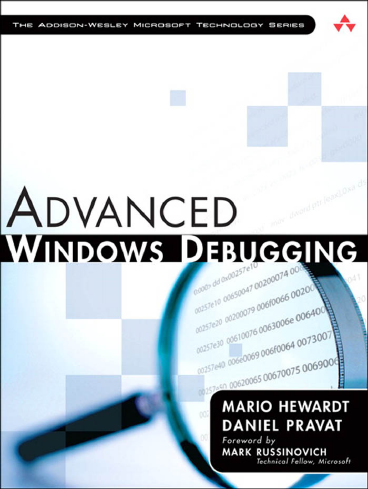
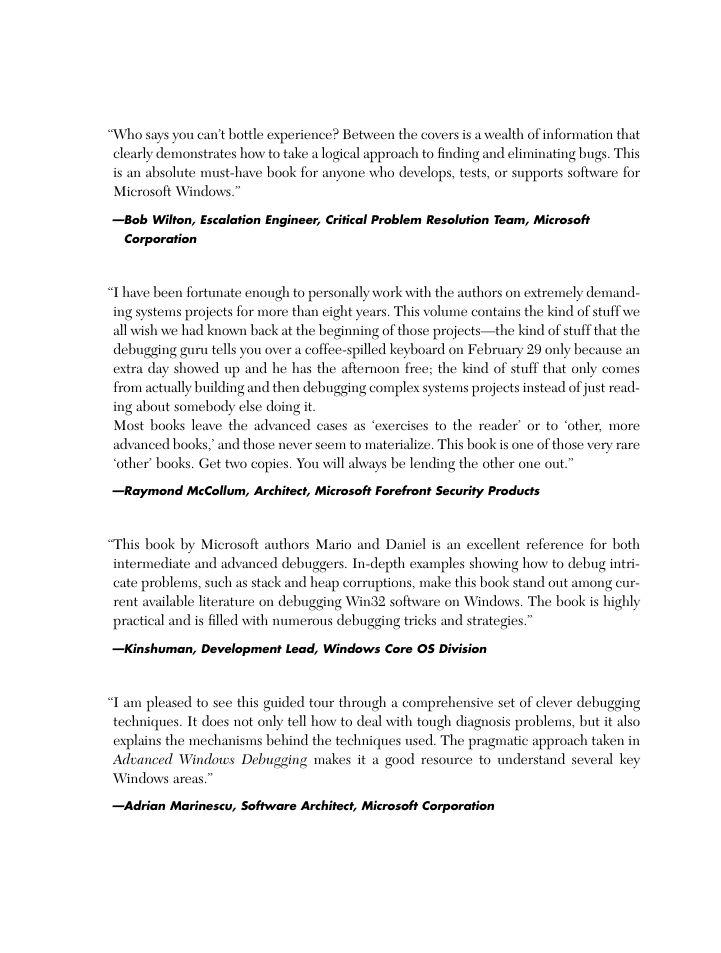
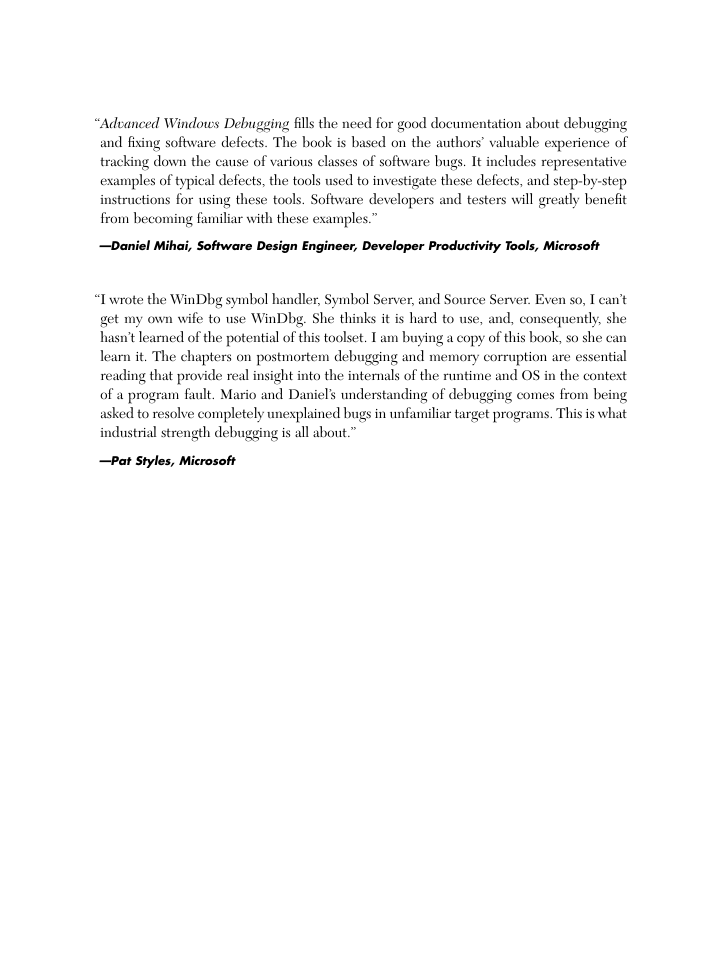
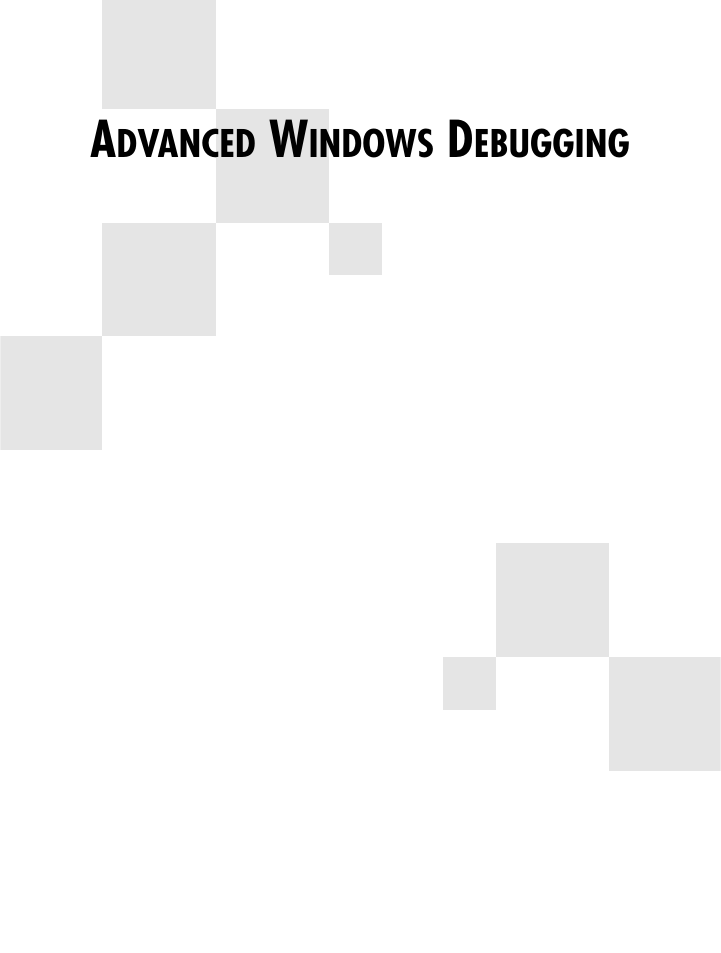
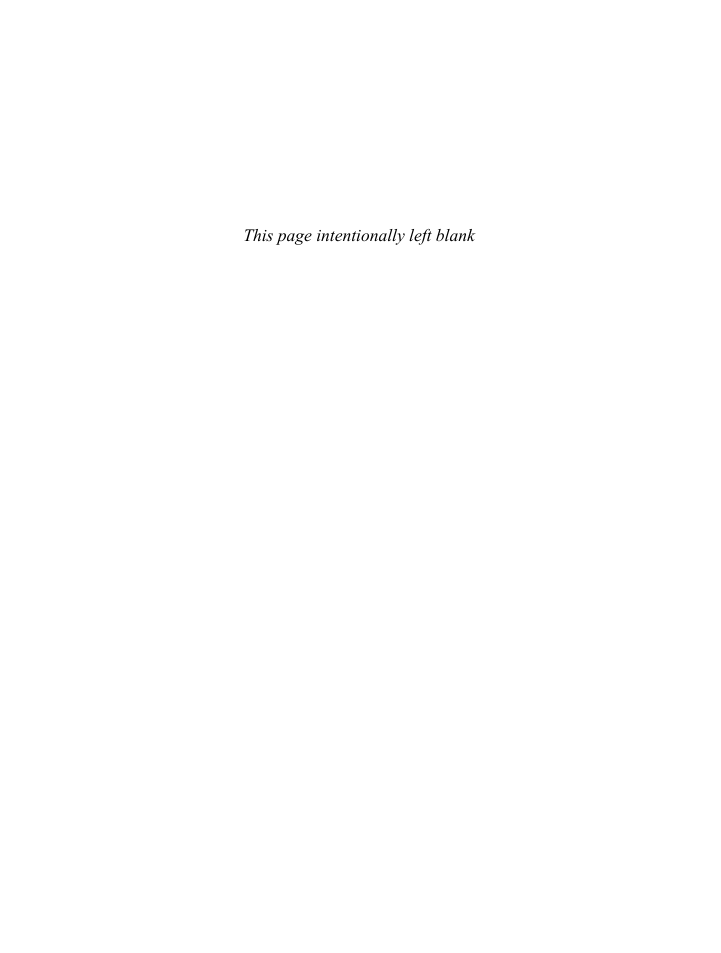
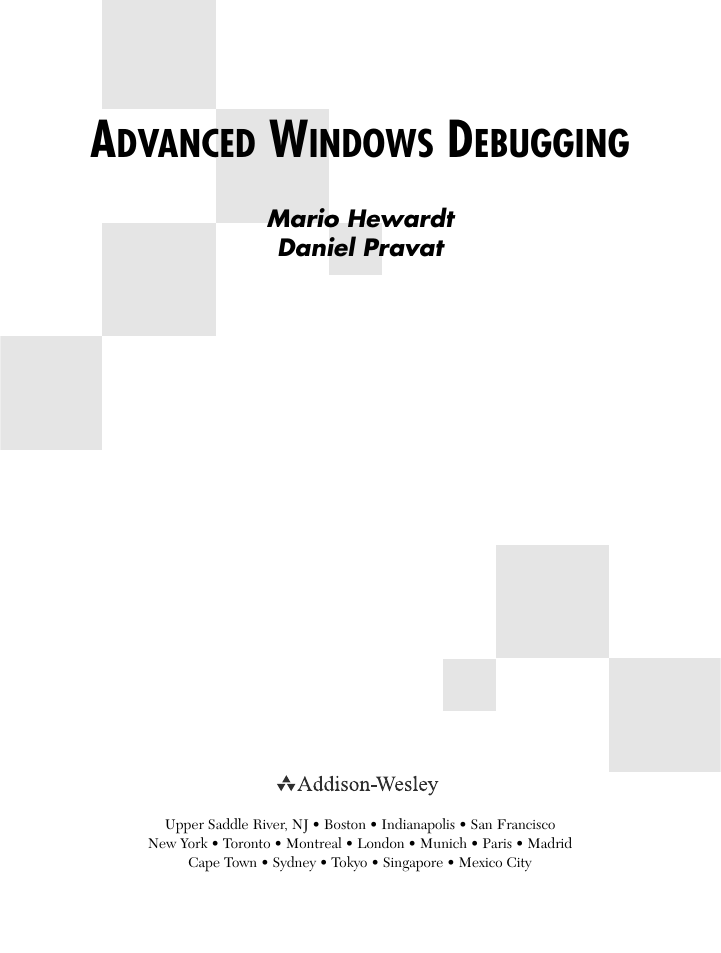
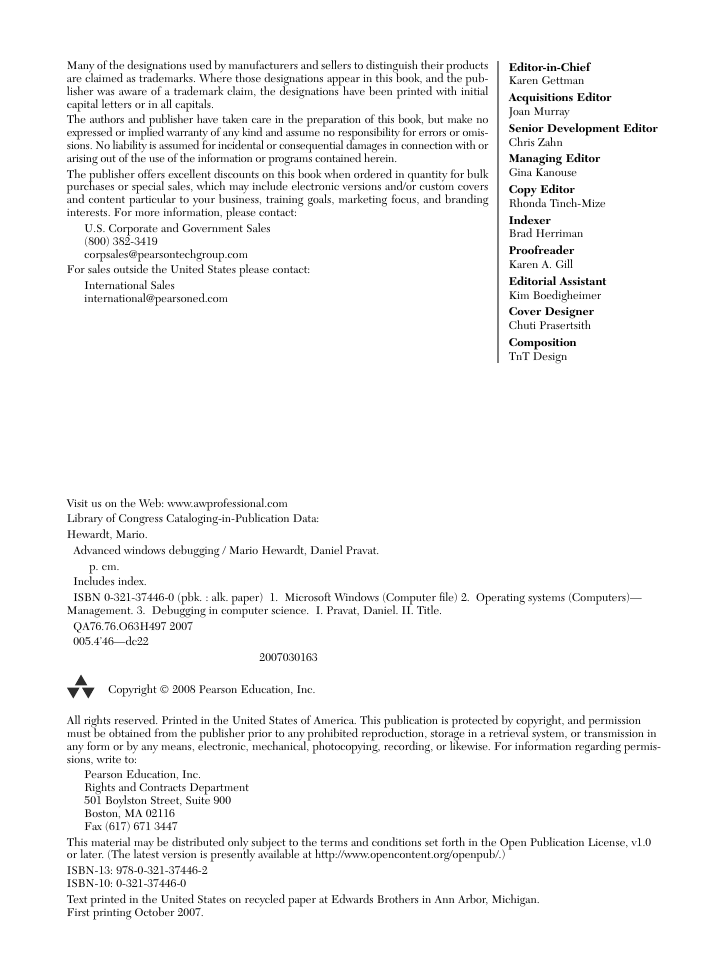









 2023年江西萍乡中考道德与法治真题及答案.doc
2023年江西萍乡中考道德与法治真题及答案.doc 2012年重庆南川中考生物真题及答案.doc
2012年重庆南川中考生物真题及答案.doc 2013年江西师范大学地理学综合及文艺理论基础考研真题.doc
2013年江西师范大学地理学综合及文艺理论基础考研真题.doc 2020年四川甘孜小升初语文真题及答案I卷.doc
2020年四川甘孜小升初语文真题及答案I卷.doc 2020年注册岩土工程师专业基础考试真题及答案.doc
2020年注册岩土工程师专业基础考试真题及答案.doc 2023-2024学年福建省厦门市九年级上学期数学月考试题及答案.doc
2023-2024学年福建省厦门市九年级上学期数学月考试题及答案.doc 2021-2022学年辽宁省沈阳市大东区九年级上学期语文期末试题及答案.doc
2021-2022学年辽宁省沈阳市大东区九年级上学期语文期末试题及答案.doc 2022-2023学年北京东城区初三第一学期物理期末试卷及答案.doc
2022-2023学年北京东城区初三第一学期物理期末试卷及答案.doc 2018上半年江西教师资格初中地理学科知识与教学能力真题及答案.doc
2018上半年江西教师资格初中地理学科知识与教学能力真题及答案.doc 2012年河北国家公务员申论考试真题及答案-省级.doc
2012年河北国家公务员申论考试真题及答案-省级.doc 2020-2021学年江苏省扬州市江都区邵樊片九年级上学期数学第一次质量检测试题及答案.doc
2020-2021学年江苏省扬州市江都区邵樊片九年级上学期数学第一次质量检测试题及答案.doc 2022下半年黑龙江教师资格证中学综合素质真题及答案.doc
2022下半年黑龙江教师资格证中学综合素质真题及答案.doc